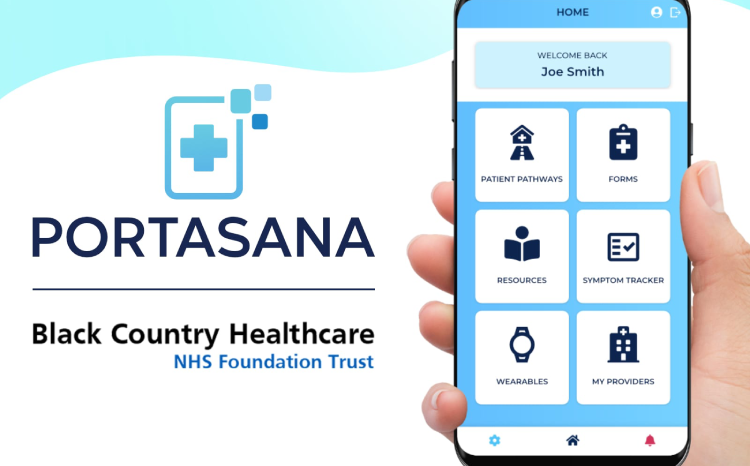Has blockchain’s time come in health and social care?
- 25 September 2018

The Emperor’s New Clothes, a genuinely transformative breakthrough, or something in between? Gareth Baxendale considers the blockchain, and the potential it may – or may not – have to transform healthcare.
In 1837, Hans Christian Andersen wrote ‘The Emperor’s New Clothes’, a short story about two weavers who create a beautiful new suit of clothes they say are invisible to those who are unfit for their positions, stupid, or incompetent.
But in reality they make nothing at all, instead making everyone believe the clothes are simply invisible to them. When the emperor parades before the people in his new suit of clothes, no-one dares to say that they do not see any clothes on him for fear they will be seen as stupid.
It’s now 10 years since the person or group known as Satoshi Nakamoto conceived the idea of blockchain – an ‘incorruptible’ digital ledger that can be programmed to record all manner of transactions – and so some might question whether it can still be classified as an emerging technology that is destined to change the world.
It’s true that in some sectors blockchain has a genuine application in securing transactional process, preventing double-counting, providing so-called smart contracts and improving the timeliness of transactions.
Take for example Spanish bank BBVA, which introduced paperless trade transactions using blockchain and piloted it on the transport of 25 tons of frozen tuna, bought from Mexico by a company in Barcelona. The result was that the time needed for document verification fell from 7-10 days to two and a half hours. Impressive figures, no doubt. However replacing paper-based document handling with a digital solution would also likely have resulted in such a significant reduction, perhaps with or without blockchain.
So what about healthcare?
The ‘Emperor’s New Clothes’ issue seems to occur when the technology steps outside of its original purpose and is used to solve problems that perhaps don’t really exist. It seems no-one wants to look silly decrying the technology for their particular purpose, resulting in all manner of over-engineered and bizarre solutions like washing machines that order their own detergent using blockchain, and the ‘why not’ idea behind smartvows.com, which allows you to get married on the blockchain… yes, really.
Over the last few years, there have been many pilot projects to consider how blockchain could be used in a health and care setting. Some have been genuinely promising, with solid use cases behind them.
Health insurance claims is an obvious example as this is a very transactional business-to-business process and aligns nicely with the premise behind blockchain.
Managing the pharmaceutical supply chain is another good fit – take for example MediLedger, whose supply chain solution is due to go live next month. Among other things, blockchain keeps an immutable record of transactions and data to demonstrate regulatory adherence and enforces agreed business rules without revealing valuable, private data. This allows it to certify the authenticity of the raw materials and drugs, prevent counterfeit items from invading the supply chain, and manage payment contract terms.
The promise of the EPR
Of all possible use cases for blockchain in health, the electronic patient record (EPR) is the one that – on paper – appears to have the greatest benefit for patient and medical practitioner alike.
But in reality, EPR also faces the greatest challenges around data protection, secondary uses, and general concerns about the idea of a person’s most sensitive data being decentralised and ‘out there’ on the internet, albeit encrypted and secure.
Throw in the fact that each health provider would need to follow a standard method to access and integrate with the blockchain and suddenly it becomes a complex challenge with many hurdles to overcome.
Despite those hurdles, a number of organisations are stepping up to the challenge. Dovetail Lab is working with social enterprise group Patients Know Best to provide a pilot that will allow people with diabetes to interact with their medical record. The solution will provide a fully audited ledger of medical data interactions, with patients managing their care from home using blood glucose, blood pressure, and weight monitoring smart devices.
Medicalchain is another provider which uses blockchain technology to securely store health records. Health professionals, pharmacists, and health insurers can request permission to access a patient’s record to serve their particular purpose and then record the transaction on the blockchain.
Patients will also have the opportunity to pay for services using the technology. MyClinic is a new service from Medicalchain that allows patients to attend video consultations with a GP and pay for them using cryptocurrency. Currently, a pilot is underway with London-based Groves Medical Group in its four medical centres.
Meanwhile an MIT research project called MedRec is trialling a health records system that offers a simple index, while leaving patient data in hospitals or GP surgeries’ IT systems. It allows clinicians to identify and access patients’ medical history, wherever it is stored. MedRec automatically keeps track of who has permission to view and change the record of medications a person is taking and rewards bitcoin-style “miners” with access to aggregated, anonymised data for epidemiological studies.
Clinical trials too
In clinical research, pharmaceutical heavy-hitters Pfizer, Amgen, and Sanofi are working together to explore how the use of blockchain could speed up clinical tests of new drugs. In practice, this could mean patients would store their data anonymously on the blockchain and then make it available to trial recruiters, who could then invite volunteers who meet the eligibility criteria.
Perhaps in the future, we might imagine an NHS Patient ID blockchain where patients can grant access via an app on their phone. The record held in the blockchain can then simply point the health provider to the location of the patient’s record, wherever it and the patient are located. Using smart contracts, a patient could arrange payment for private care or simply use blockchain to agree to the terms of a particular medical procedure. The possibilities are many and indeed exciting for empowering patients – simplifying the sharing of critical health data at crucial times.
But while we await the possibilities that blockchain can offer health and care, please do feel free to indelibly record your marriage along with your wedding vows within a smart contract on the blockchain… You know you want to.
Gareth Baxendale is head of IT operations and technology for the NIHR Clinical Research Network and a BCS chartered fellow. He is vice chair of the BCS Health and Care Executive and a chartered assessor and FED-IP assessor.





1 Comments
Blockchain , IoT and AI will totally shake our daily life’s and this includes NHS as it can reduce admin and supply costs in billions £. I remember mentioning this to one the leading trust program manager at the presentation for ‘Global Digital Exemplars’ role and how he plans to bring another 50+ clinical systems on board. I asked, why do we need another 50+ more clinical systems on top 50 which we already look after which all struggle with a same interoperability problems, he looked and struggle to explain. We know that the future is ‘open’ and ‘decentralized’ , why don’t we start piloting real future proof technologies like Blockchain, IoT (internet of things) and AI and ML (artificial intelligence and machine learning)? NHS needs to embrace those technologies and start looking for partners to support this vision.
Comments are closed.